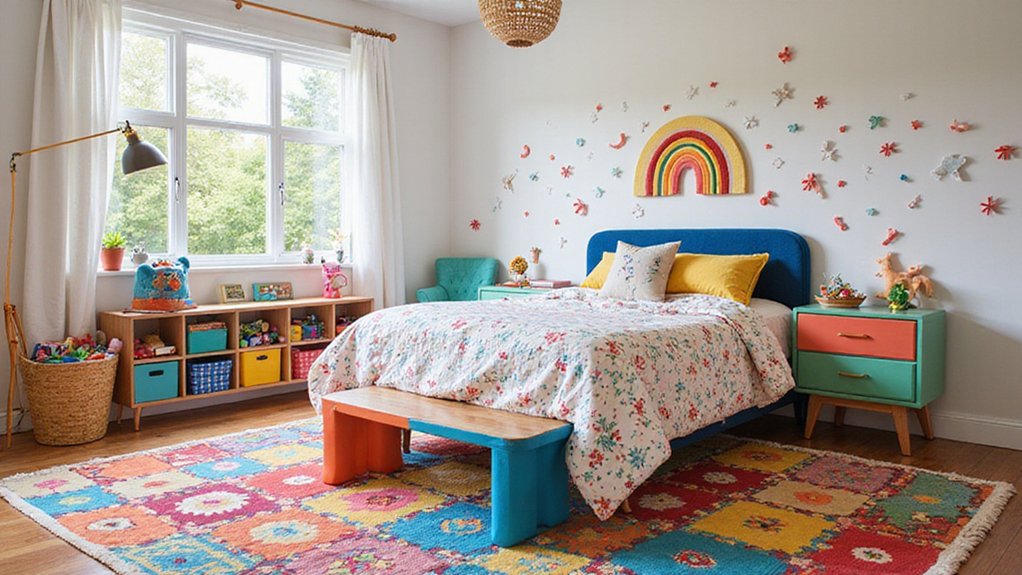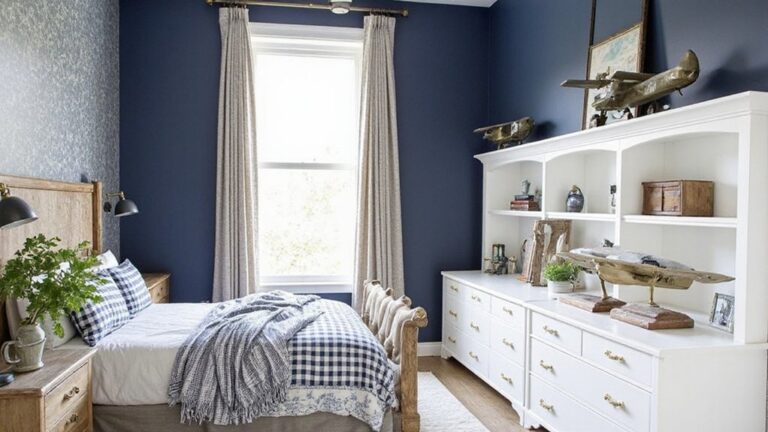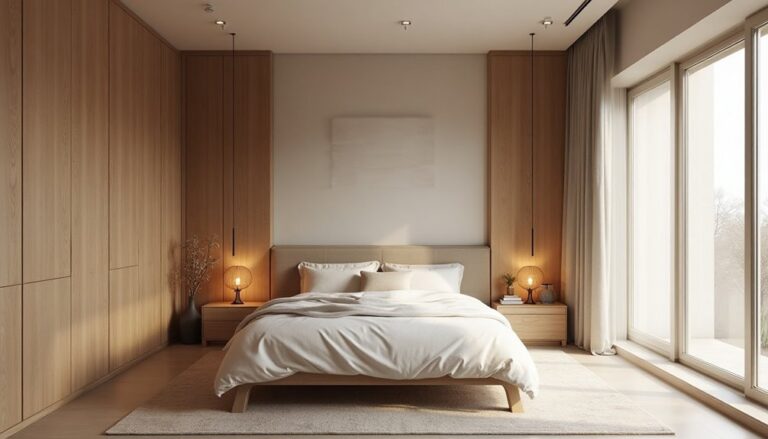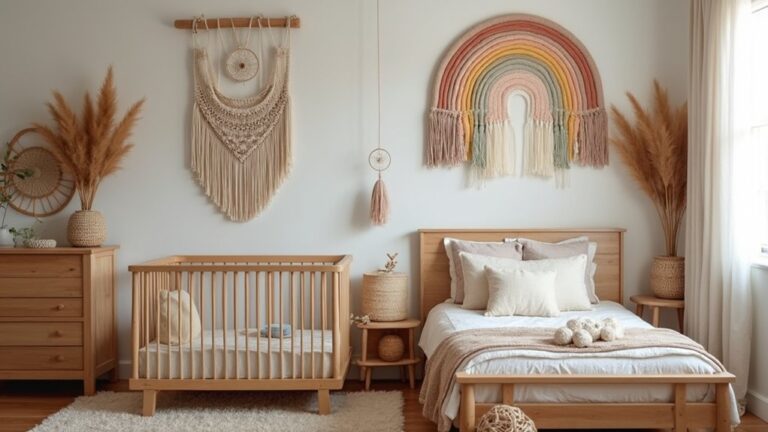Creating a kid’s room that truly captures their wild, wonderful personality feels like solving the world’s most delightful puzzle. You’re juggling dinosaur obsessions with unicorn dreams, trying to honor their latest superhero phase while knowing they’ll probably discover astronomy next month—and somehow, you want it all to work together without looking like a toy store explosion.
I’ve always believed the best children’s spaces tell a story rather than follow a single theme, and eclectic design gives you that perfect freedom to celebrate every quirky interest your little one develops. Instead of fighting their ever-changing passions, you can create a room that grows and adapts with them.
You’ll discover how to mix multiple themes through smart color choices, transform their artwork into stunning gallery walls, and layer patterns that somehow make perfect sense together. These aren’t random decorating tricks—they’re intentional strategies that create spaces as unique and evolving as your child’s imagination.
Mix Multiple Themes Without Fear

While traditional decorating wisdom suggests sticking to one cohesive theme, your child’s room doesn’t need to follow these rigid rules. You can successfully blend dinosaurs with unicorns, space exploration with fairy tales, or pirates with princesses. The key lies in finding common elements that tie disparate themes together—perhaps through color palette, texture, or artistic style.
Choose one dominant theme as your foundation, then weave in secondary interests through smaller accessories like pillows, artwork, or toys. This approach lets you honor your child’s evolving passions while creating a space that feels intentionally curated rather than chaotic.
Create Gallery Walls That Tell Their Story
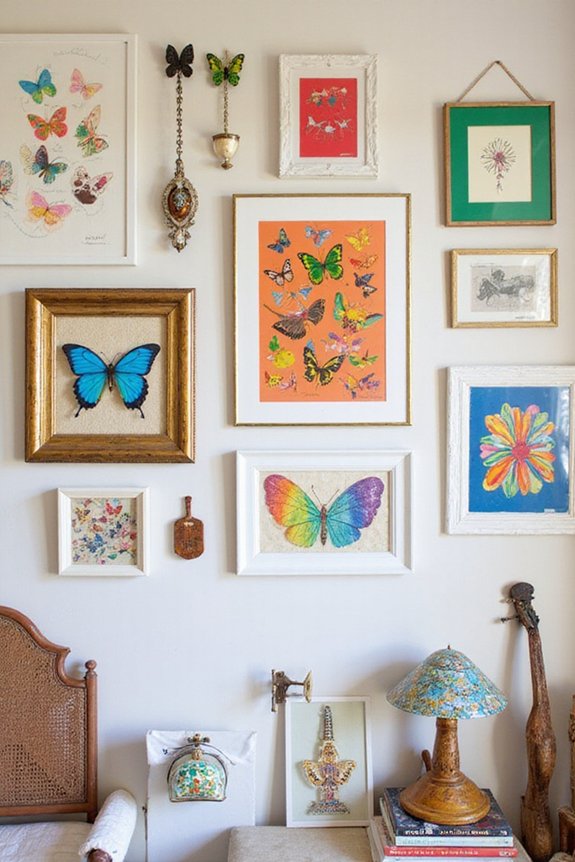
Beyond themed decor, one of the most powerful ways to personalize your child’s space is through a thoughtfully arranged gallery wall that celebrates their unique journey. Mix their artwork with family photos, achievement certificates, and treasured mementos.
Don’t limit yourself to traditional frames—display 3D objects on floating shelves, hang fabric pieces, or showcase collections in shadow boxes. Create visual flow by varying sizes and heights while maintaining consistent spacing.
Let your child help choose what goes up and rotate pieces regularly. This evolving display becomes a living timeline of their growth, interests, and memories.
Layer Textures and Patterns With Confidence
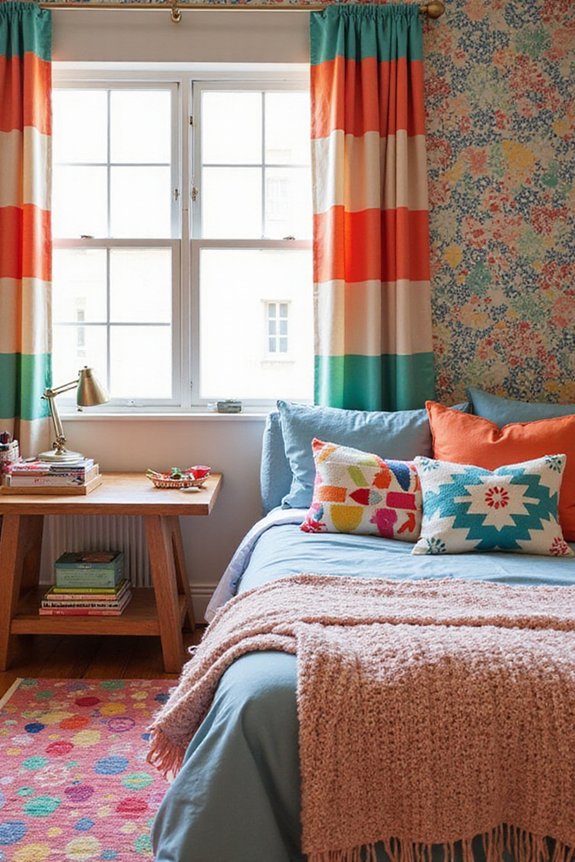
Although many parents shy away from mixing patterns and textures in kids’ rooms, you’ll create visual depth and interest when you layer them thoughtfully. Start with one dominant pattern as your foundation, then add complementary designs in different scales. Mix stripes with florals, or geometric prints with organic shapes.
Consider these texture combinations:
- Soft meets structured – Pair chunky knit throws with sleek wooden furniture
- Natural with synthetic – Combine woven baskets with metallic accents
- Smooth and rough – Layer silk pillows on textured rugs
Keep colors cohesive while varying textures to maintain harmony without sacrificing personality.
Build a Reading Nook That Sparks Adventure
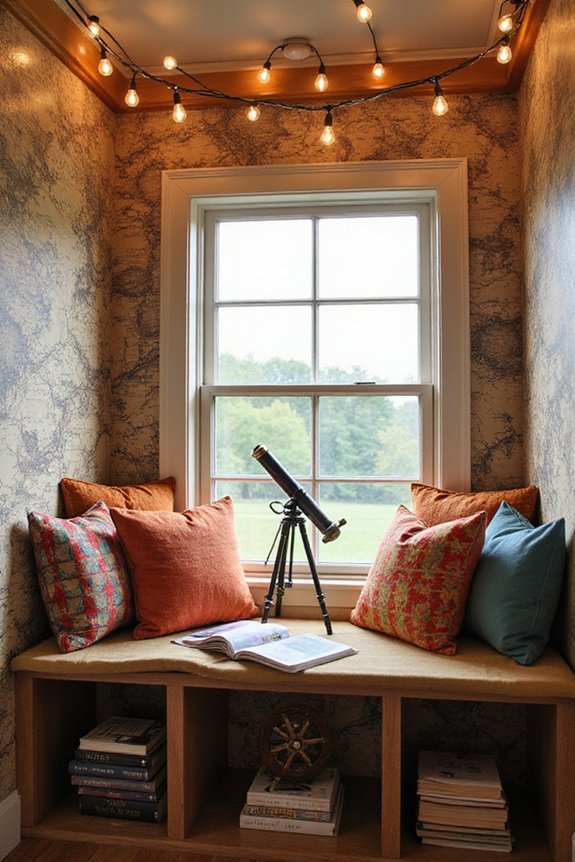
A cozy reading nook transforms any corner of your child’s room into a magical escape where stories come alive. Create this enchanting space by positioning floor cushions beneath a window or tucking a bean bag into an unused corner.
Add floating shelves at your child’s height to display favorite books within easy reach. Drape string lights overhead for warm ambiance, and include a soft throw blanket for snuggling. Consider adding a small side table for water cups or reading glasses.
This dedicated space signals that reading’s special, encouraging your child to immerse themselves in adventures whenever inspiration strikes.
Transform One Wall Into a Creative Canvas
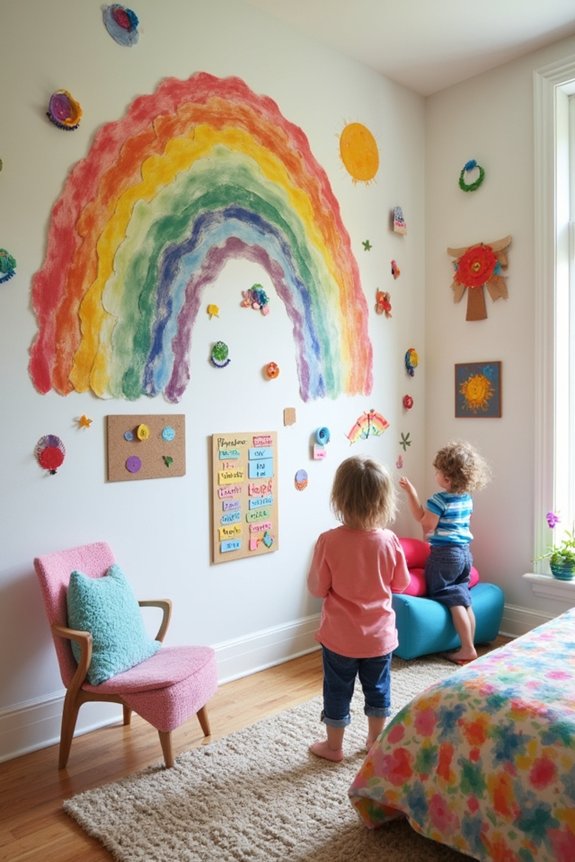
When you designate one wall as your child’s creative canvas, you’ll reveal their artistic potential while protecting the rest of your room from wayward crayon marks. This dedicated space encourages artistic expression without compromising your home’s overall design.
Consider these three approaches to create the perfect creative wall:
- Chalkboard paint – Apply directly to drywall for endless drawing possibilities that wipe clean
- Magnetic whiteboard panels – Install removable boards that accommodate both markers and magnetic decorations
- Paper roll dispenser – Mount a large paper roll holder for constantly fresh drawing surfaces
You’ll discover this simple addition transforms ordinary bedrooms into inspiring creative studios.
Blend Vintage Finds With Modern Elements
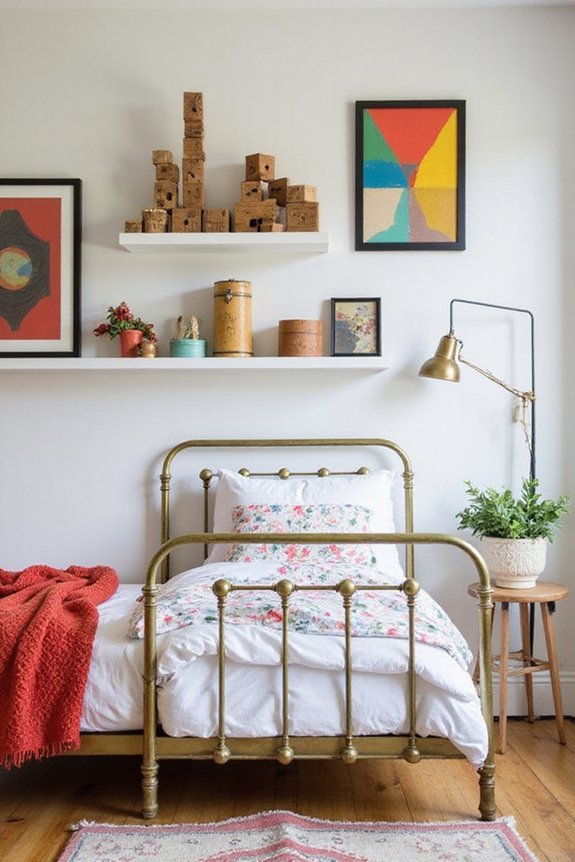
By combining vintage treasures with contemporary pieces, you’ll create a kids’ room that feels both timeless and fresh. Hunt for retro toys, mid-century furniture, or antique books at thrift stores and flea markets.
Pair a vintage wooden desk with a sleek modern chair, or display old-fashioned tin toys alongside contemporary artwork. Mix weathered storage trunks with bright, geometric rugs. Don’t forget textiles—vintage quilts look stunning draped over modern beds.
The key is balance: let each era complement the other rather than compete. This thoughtful mixing creates layers of visual interest while telling your child’s unique story.
Design Flexible Spaces That Grow With Them

Smart furniture choices and thoughtful layouts transform children’s rooms into spaces that adapt seamlessly from toddler years through the teenage phase. You’ll want to invest in pieces that serve multiple purposes and can evolve with your child’s changing needs.
- Choose adjustable furniture – Select desks with extendable heights, beds that convert from toddler to twin size, and shelving units with moveable components
- Create modular storage systems – Use stackable cubes and bins that can be reconfigured as storage needs change
- Plan neutral base elements – Install versatile flooring and paint walls in adaptable colors that won’t clash with evolving décor preferences
Incorporate Collections as Decorative Elements
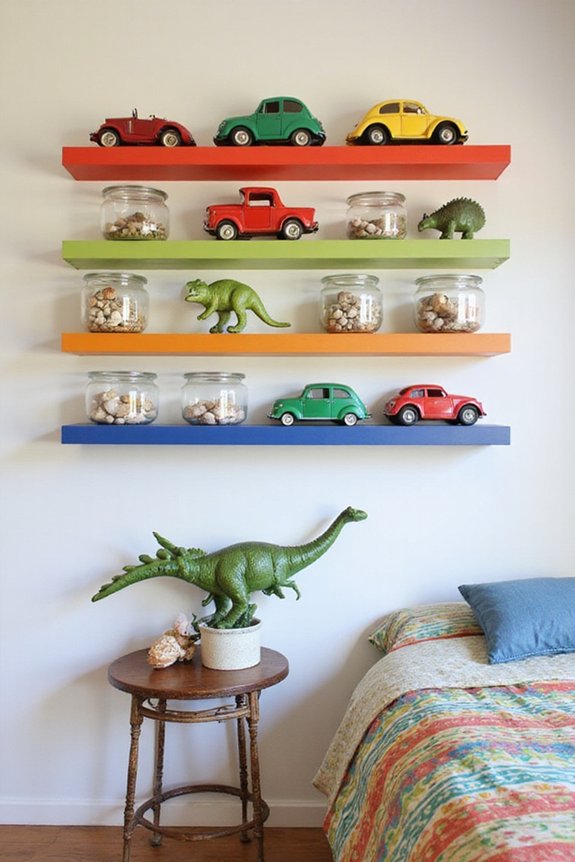
Children’s treasured collections—whether rocks, baseball cards, toy cars, or seashells—can become the foundation of their room’s personality while teaching valuable organization skills. Display collections using shadow boxes, floating shelves, or clear containers that protect items while keeping them visible.
Create gallery walls with framed stamps or postcards, or arrange action figures on dedicated display ledges. Rotate collections seasonally to prevent visual overload and maintain your child’s interest. Use collections as color inspiration for room schemes, letting a butterfly collection influence wall colors or a rock display guide accent choices. Collections become meaningful decor that reflects your child’s unique interests.
Use Color Boldly and Unexpectedly
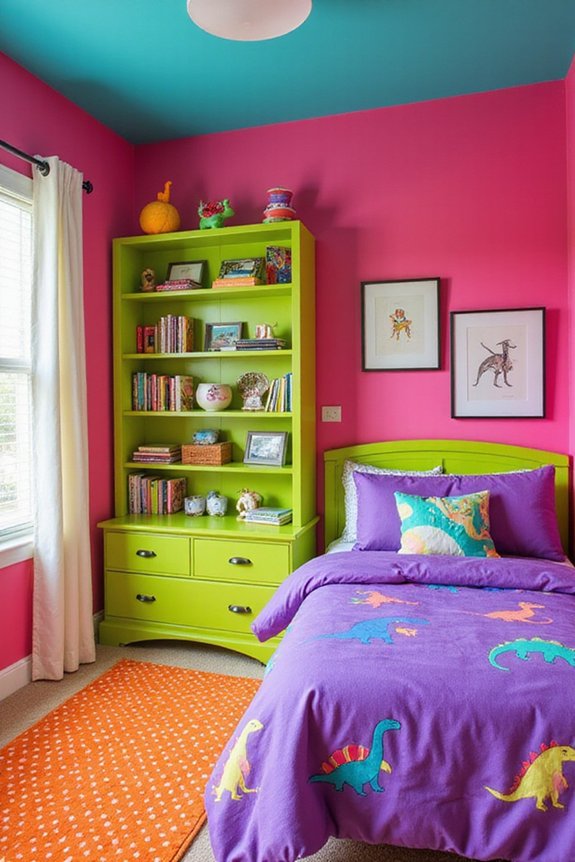
While collections provide personal touches that reflect your child’s interests, color choices can amplify that personality even further through unexpected combinations and bold applications.
Don’t limit yourself to traditional pastels or gender-specific palettes. Instead, embrace vibrant contrasts that spark creativity and joy.
- Paint one accent wall in a saturated jewel tone like emerald green or sapphire blue to create dramatic focal points
- Mix warm and cool colors together such as coral with turquoise or mustard yellow with lavender purple
- Use neon or metallic accents sparingly through lighting fixtures, picture frames, or decorative accessories
These fearless color choices transform ordinary spaces into dynamic environments.
Conclusion
Think of your child’s room like a jazz musician’s improvisation—there’s structure, but the magic happens when unexpected elements blend together. Studies show kids perform better creatively in spaces that reflect their authentic interests rather than perfectly coordinated themes. You’re not decorating a showroom; you’re crafting a launching pad for imagination. Embrace the beautiful chaos of mixing polka dots with dinosaurs, vintage books with neon art. Their personality deserves nothing less than pure, unfiltered expression.

